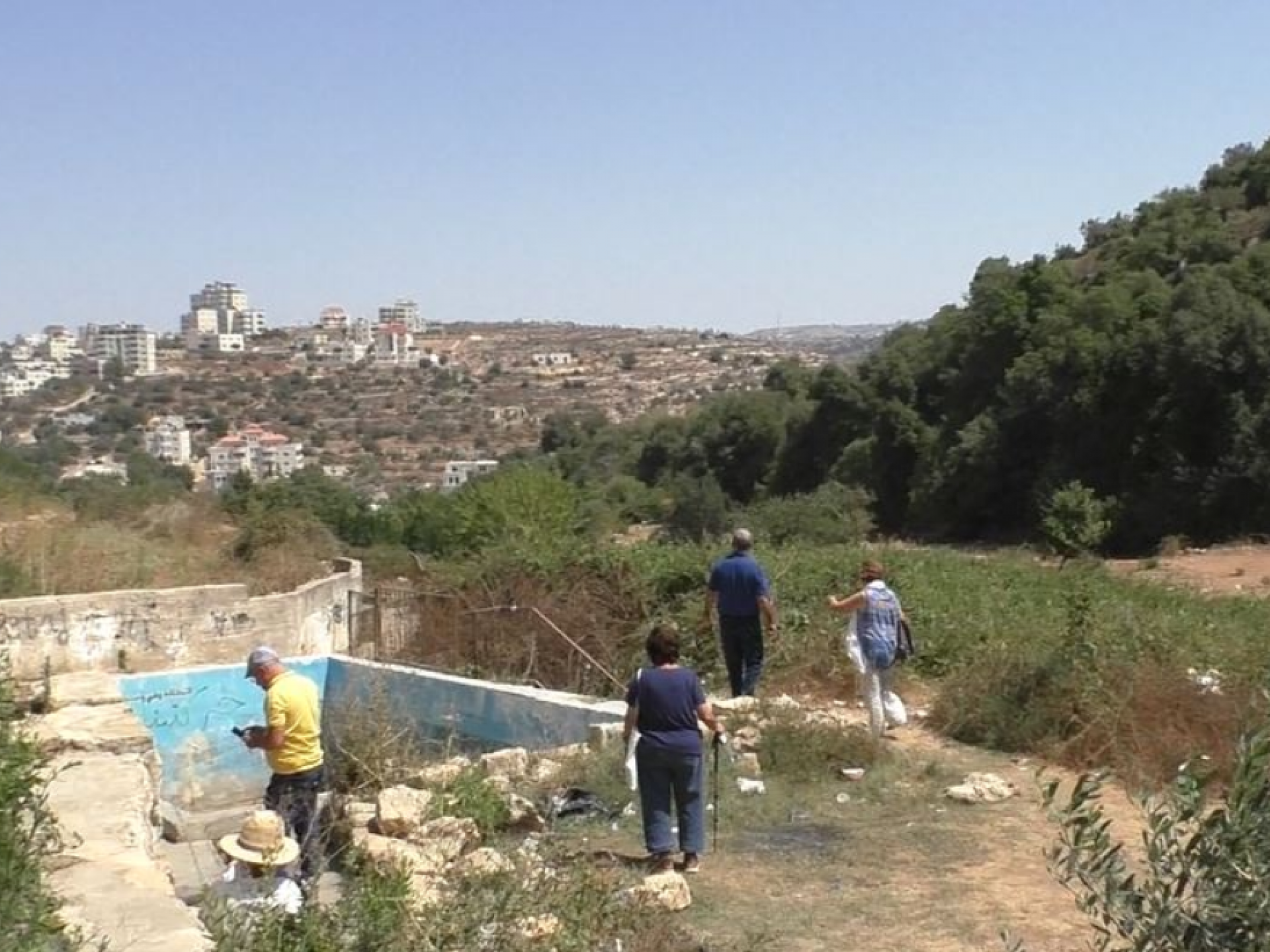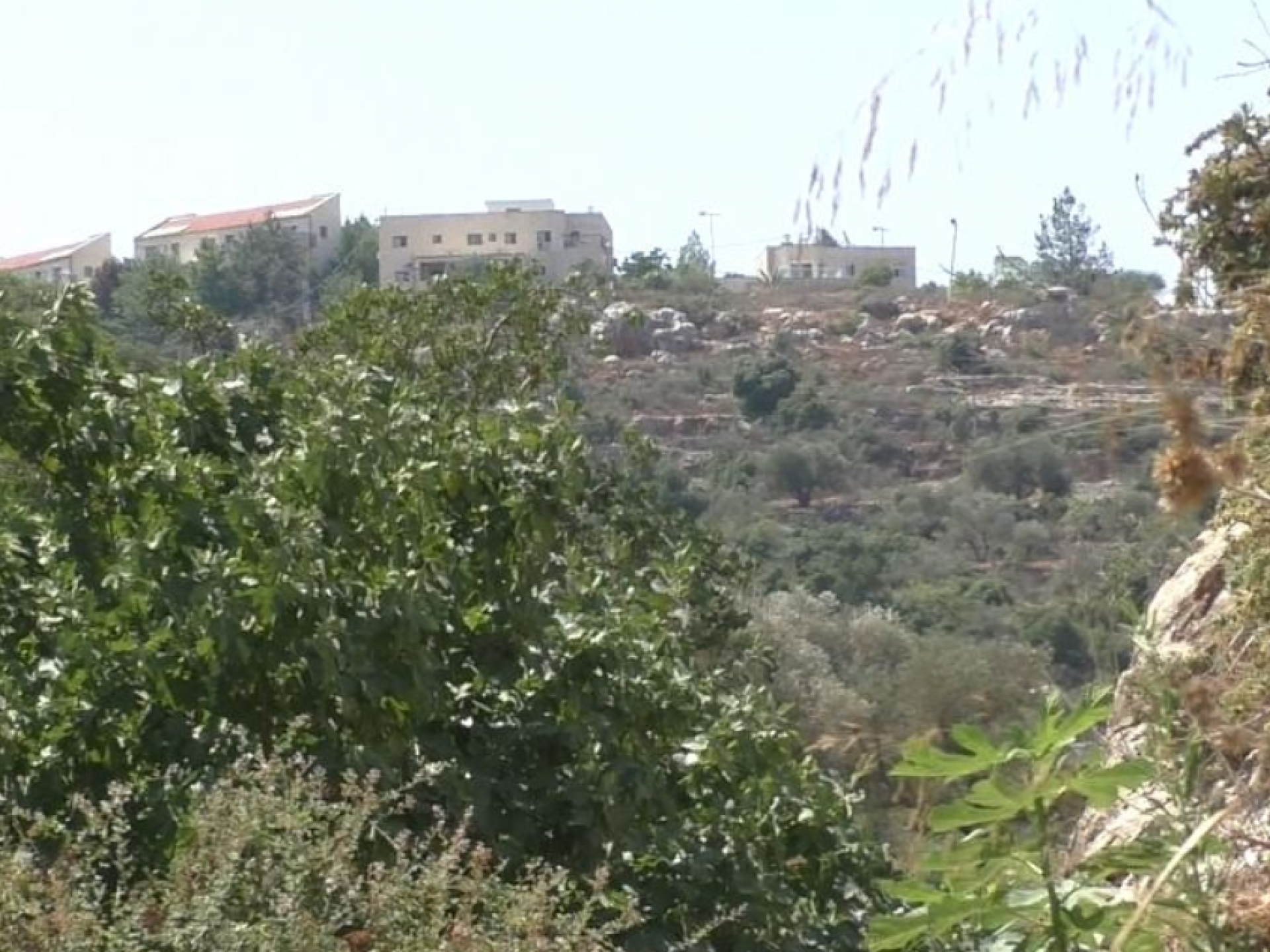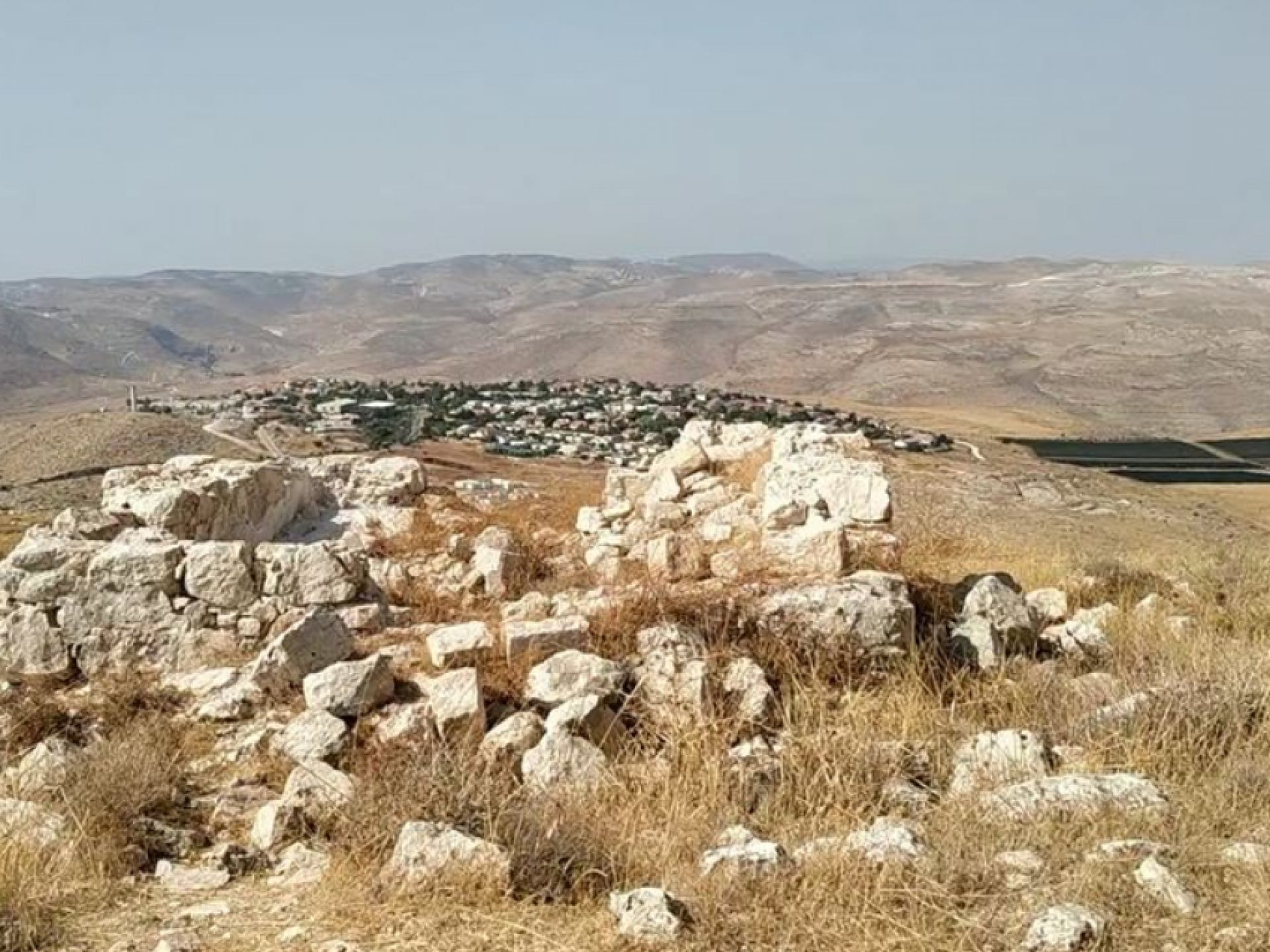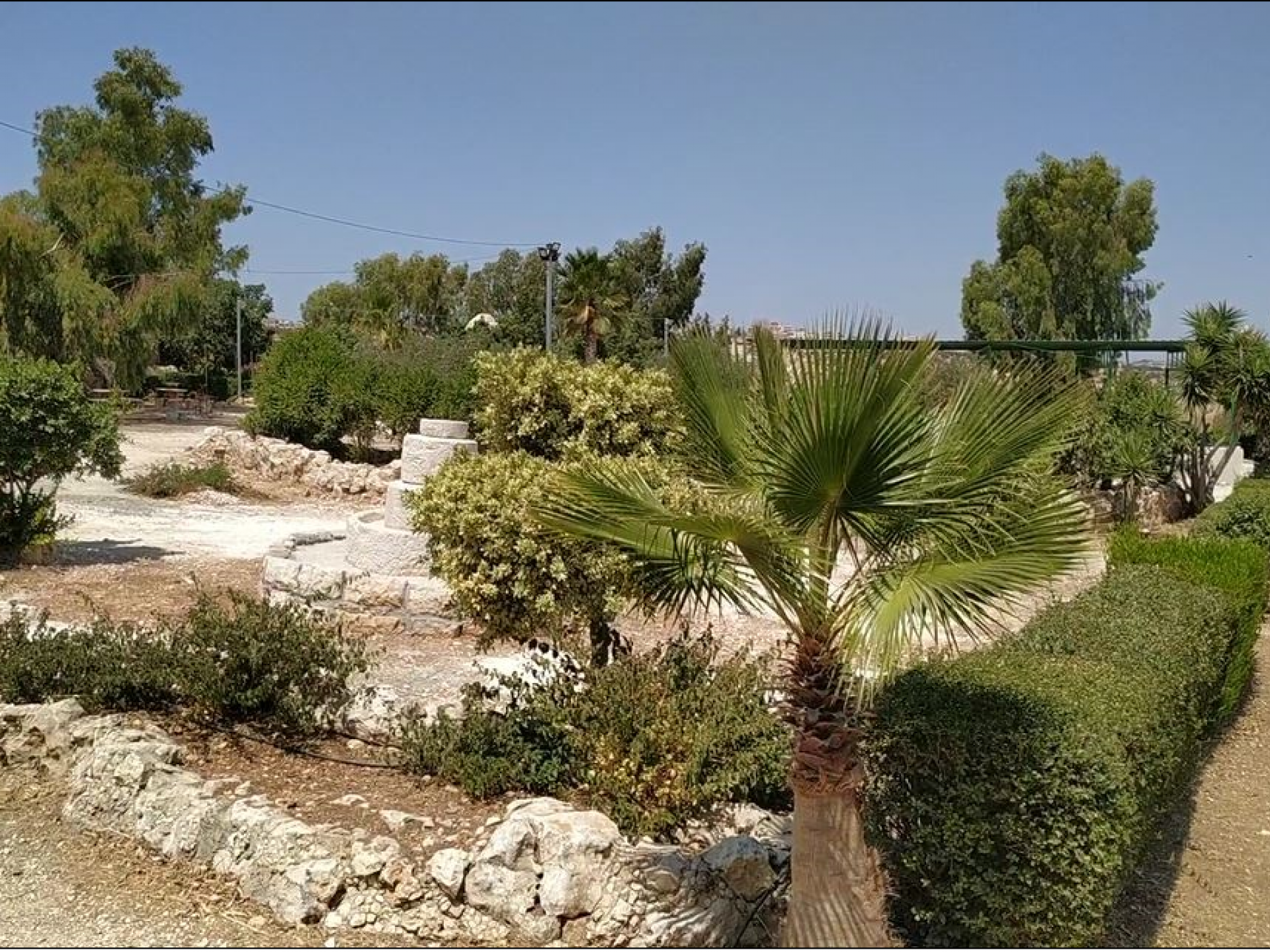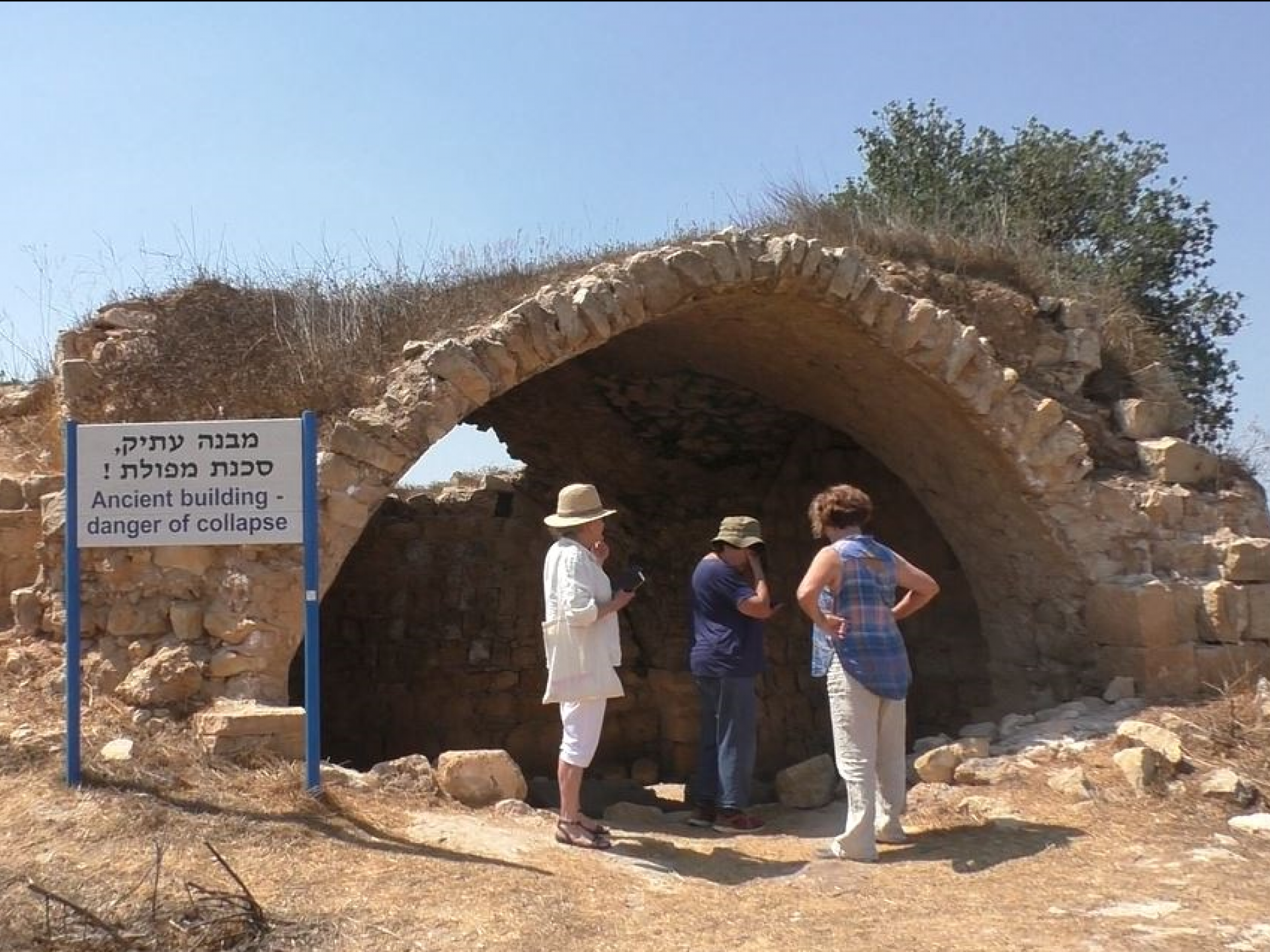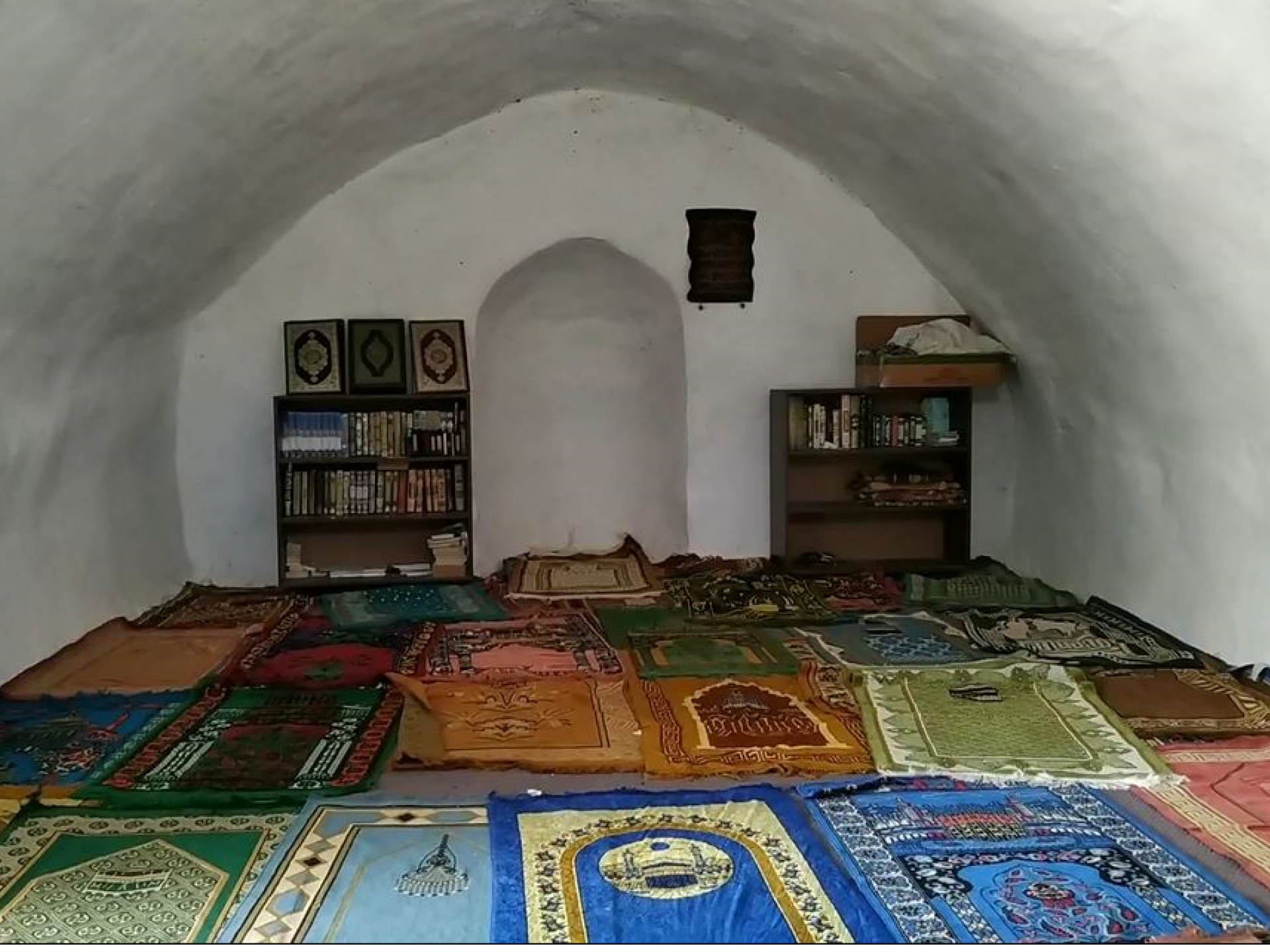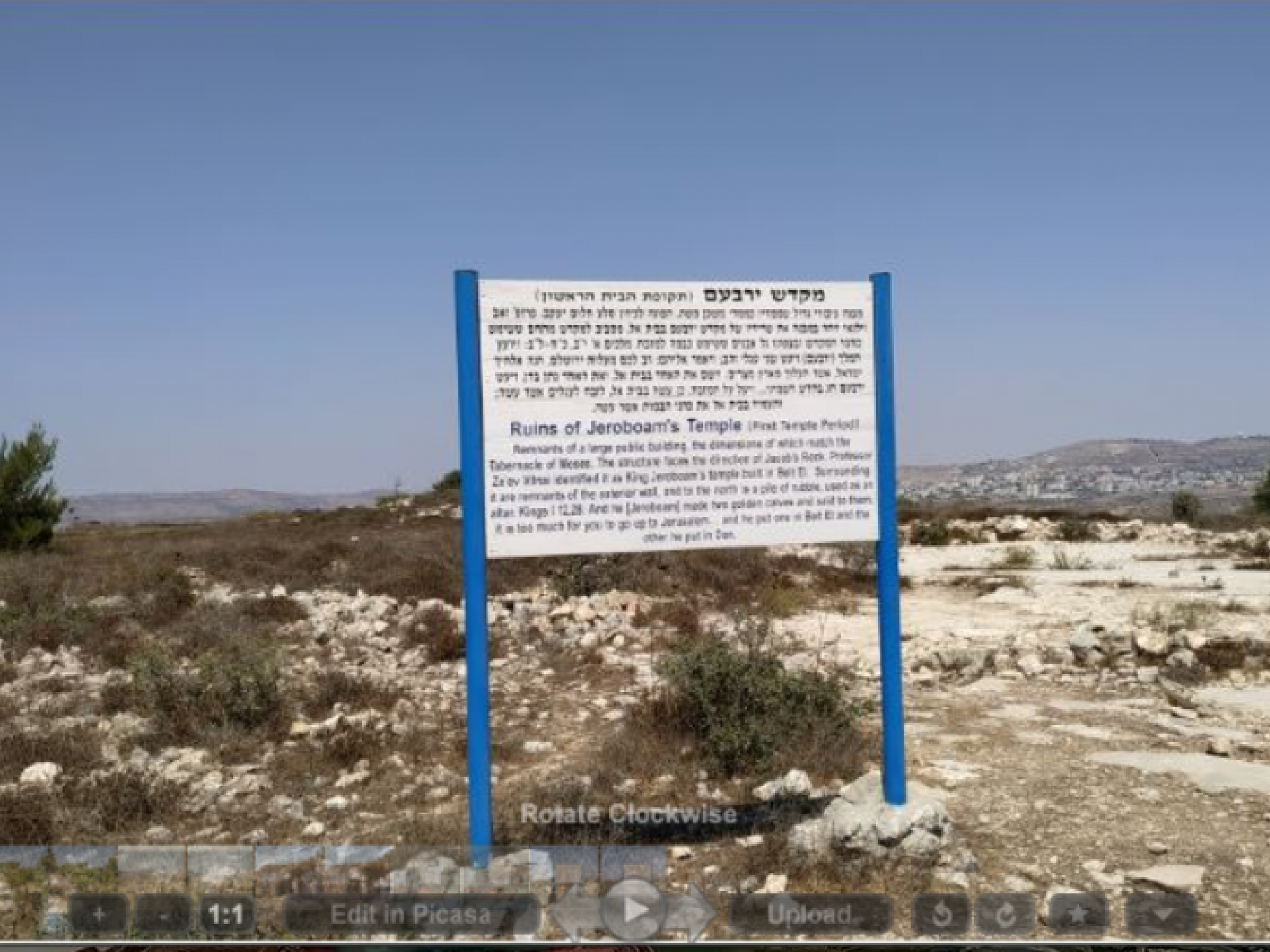Caged Maqams in the West Bank: The Jewish settler-colonists are systematically Judaizing the occupied Muslim heritage and holy sites (makams)
Yerob’am Temple at the Beit El archeological site
We took off at 9 a.m. from Rosh Ha-Ayin to four main destinations: Dura Al Qara, Beit El, the archeological site “Jacob’s Dream”, Maqam Sit Zahara opposite the settler-colony Kochav Ha-Shachar
From the Dora Al Qara are we do have previous reports, and with every visit we learn another aspect – we accumulate them in order to file a lawsuit regarding violations of the rights of an occupied population, such as Israel’s use of Waqf land (sanctified by the Islam and Muslim society) for declaring nature reserves. Such reserves cage in maqams sacred for Palestinians, and do not enable them to carry on with their rural traditions.
In the town of Dura Al Qara we met Abu Bajes and drove with him to the water springs area. In the past we had interviewed him and were now interested in interviewing him again for in the interim he has studied the subject and asked other villagers about their memories of this area and the maqam situated at the top of the mountain (Sheikh Abdallah).
He said that in order to different this town by name from the town of Dura near Hebron, they call it “Dura Al Qara” after the large pumpkins (Qara in Arabic) grown there. We also heard and read about farming that flourished around there thanks to the abundant spring water. All this was in the past, before Israel occupied the area in 1967.
The interview took place as Irit asked her questions, Mustafa (our driver) translated, and Abu Bajes answered, while Yiftah took pictures. The questions mostly regarded his own childhood memories prior to the 1967 War. How the springs area served the villagers, how holidays and family events were celebrated there and at the maqam Sheikh Abdallah, situated right over Dura Al Qara. Abu Bajes remembered his grandfather who cultivated lands near the springs and how the land around them was divided among the different families. Since the Bet El settler-colony was built, its colonists began to block the water ditches and fill them with stones. At present the residents irrigate their fields in closed ditches and all the pools that were formerly watered by the springs are dry and filled with waste. Abu Bajes said that lately the village received a donation from a European country in order to restore the water springs area that looks dry and neglected. A while ago they planted 400 trees in the area and Beit El settler-colonists have uprooted almost all of them. This event has been looked into by Yesh Din (Israeli human rights organizations). We shall inquire with the organization about the complaint that the village council placed regarding this matter.
We took leave of Abu Bajes who promised to obtain the PA’s permission to publish our interview with him in a special video.
We continued through En Yabrud and Bitun to Deir Dibuan. The town is filled with high modern and elegant buildings. We were told that many of its dwellers made their fortune abroad and came back to build nice homes for themselves in order to keep their generations-long family lands.
At Deir Dibuan we came to maqam Sheikh Amar in order to photograph it and video-show a maqam that for years has been used by Palestinians, far from Jewish settler-colonies and without a nature reserve declared by the State of Israel around it. And indeed this maqam is beautiful, groomed, clean and open to visitors. Plentiful fig trees grow around it and everything invites one to enjoy the place.
We continued to maqam Sheikh Abdallah that served the villagers of Dura Al Qara in the past. The two-domed maqam is neglected, half ruined, and sad to look at. The matter of its ruin (this maqam too is supposedly under Waqf authority) was taken up by the villagers as well with Yesh Din and we shall see what has been done about it and report. This maqam is situated in the midst of a Mediterranean growth of trees and bushes: Various types of oak, pistachio, buckthorn, olive and fig trees, dried cistus bushes, and the skeletons of various bushes that dried out in the heavy summer heat (except for common fennel that is replete with yellow, sweet smelling flowers). In the center stands an old oak tree supported by “crutches” that the Israeli Nature Reserve Authority put up, and the sign below it shows a quote from the Bible and attributes it Deborah, Rebecca’s wetnurse… The entire area is filled with signs quoting the Bible to describe this place 4000 years ago.
In this part we learned that no only we study the past, but that our questions and interest arouse the Palestinians to return to discourse of the past, legitimize it and broaden their historical knowledge. This is the kind of knowledge that the Israeli public lacks and usually denies and silences it.
From Deir Dibuan we headed north-east to the large Jewish settler-colony Kochav Ha- Shachar, on our way to maqam Sit Zahara situated at a high altitude and overlooking the Jordan Valley. In Arabic it is called Quba’at Najima, and is right opposite Kochav Ha-Shachar. We passed by a large stage placed there by the Nature Reserve Authority at the highest point overlooking the east. We do not know why this stage was put up, there is no explanation at the site. From an observation point named after Rechav’am Ze’evi we walked (the heat was extreme) and climbed to the ruined maqam. We had read that it was built in honor of a Muslim holy woman called “Grandmother Zahara”. A photo from 1975 by Amikam Shuv shows the one-domed maqam whole. At present it is obvious that not the teeth of time made it crumble, but that it was destroyed intentionally, in one fell swoop. Who caused this destruction? One can only guess…
We returned, walked down and drove north. At 5:30 p.m. we returned to Rosh Ha-Ayin (Israel).

